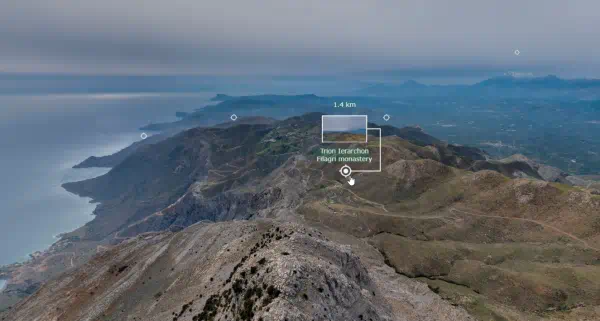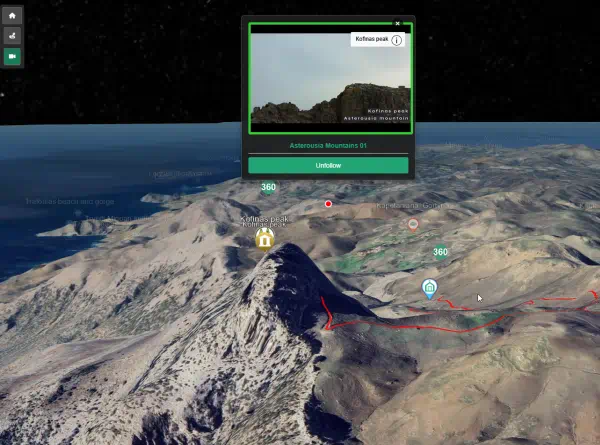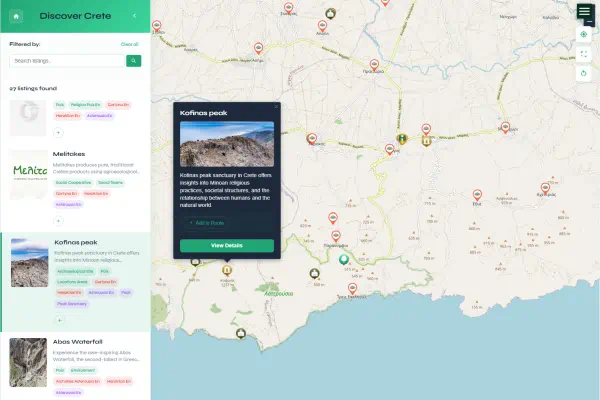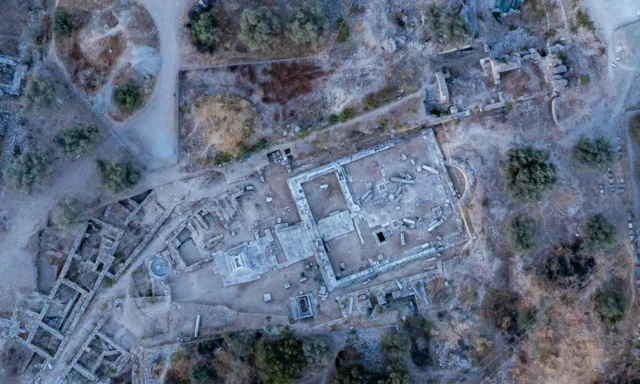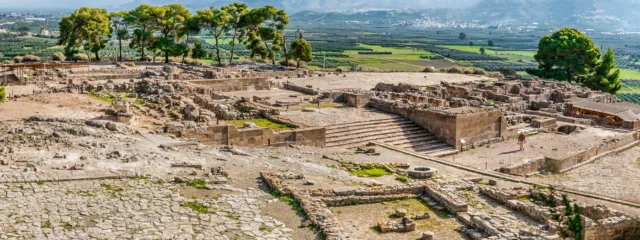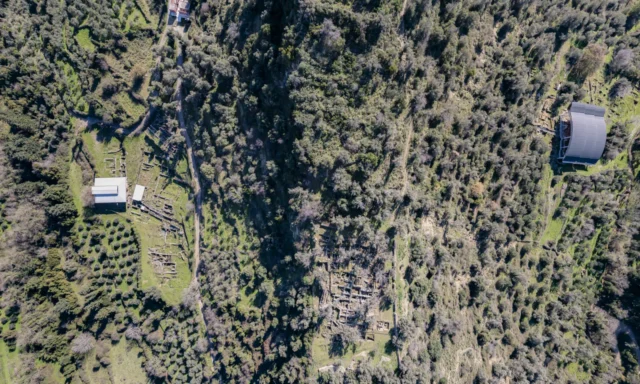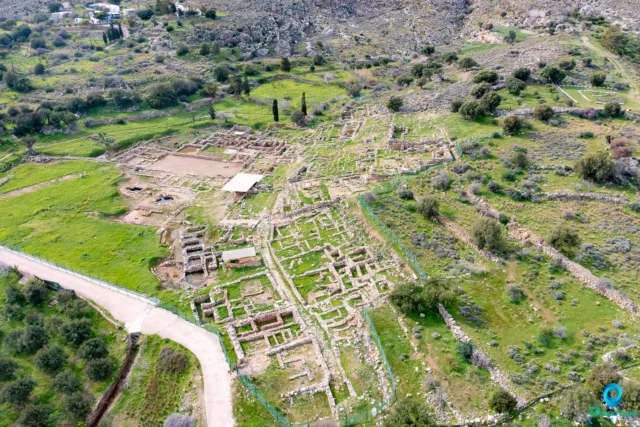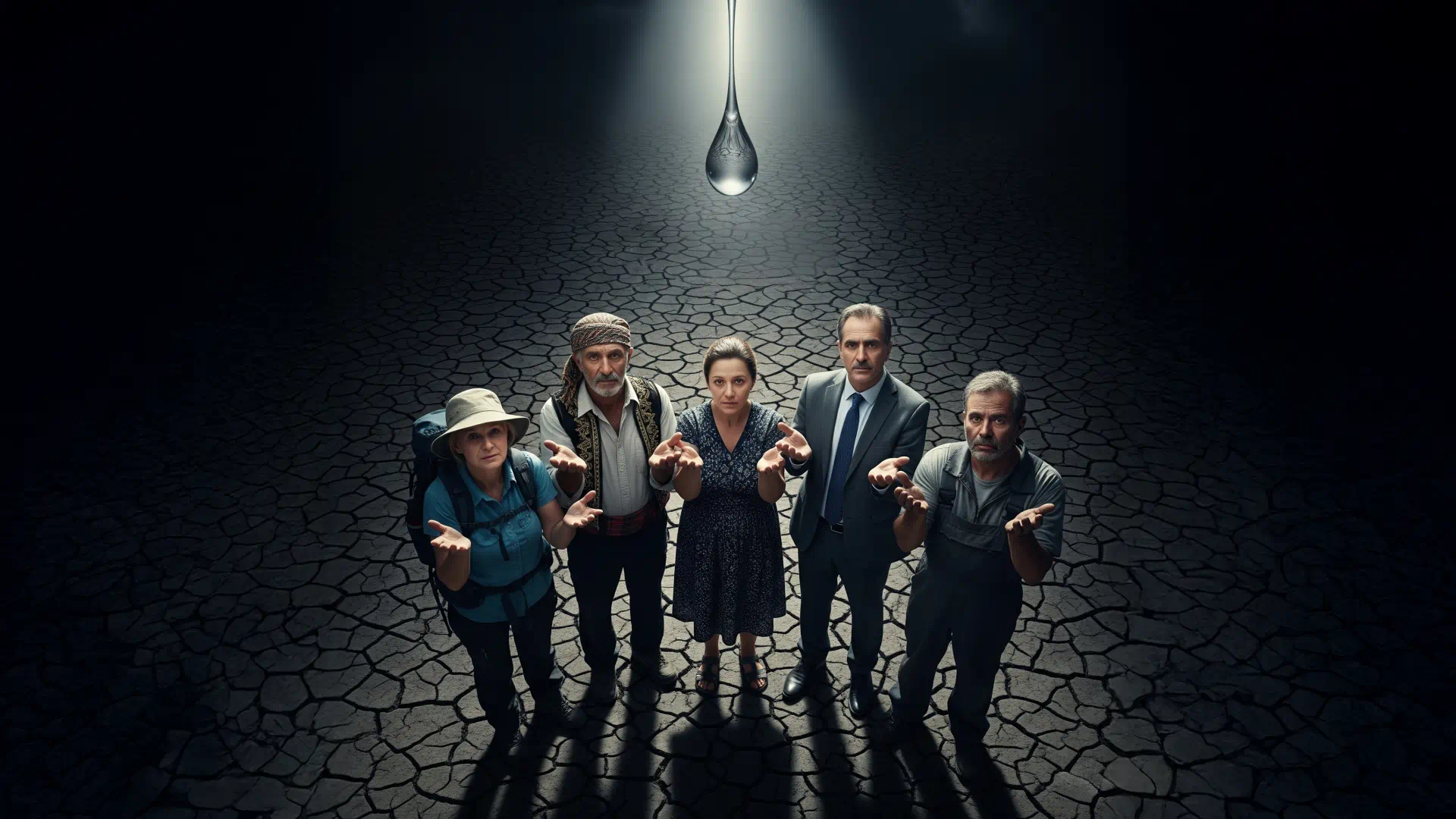The current model of mass tourism in Crete, driven by a high volume of visitors after the pandemic is in conflict with the increasing lack of water, a major problem made worse by climate change and poor management. The quick recovery of tourism after COVID-19, while good for the economy in the short term, has hidden a growing environmental weakness. This increase in tourism, largely caused by a move towards less controlled and more water-demanding short-term rentals, is putting more strain on the island’s already used-up water supplies. The failure to connect tourism plans with water management has created a significant gap in control, leaving Crete’s main source of income vulnerable to the environmental problem it helps to worsen.
Key points
- The Environmental Reality: Data from the European Drought Observatory (EDO) confirms that Greece, and particularly Crete, is a hotspot for severe and prolonged drought conditions. Analysis of indicators such as the Standardized Precipitation Index (SPI) and the Combined Drought Indicator (CDI) reveals a persistent pattern of “warning” and “alert” levels across the region from 2023 to 2025. Scientific projections indicate a worsening trend, with increased frequency and intensity of droughts expected, positioning the island on the frontline of climate change in the Mediterranean.
- The Economic Driver: In the post-COVID-19 era, tourism arrivals and revenues in Crete have not only recovered but have surpassed pre-pandemic records. In 2022, arrivals were already 4.98% higher than in 2019, a trend that continued with a 7% growth in 2024 over 2023, representing over 5.35 million airport arrivals. This resurgence is driven by a significant expansion in the short-term rental market, which saw rental days in Greece double in 2024 compared to 2019, with Crete being a primary contributor.
- The Point of Conflict: The unsustainability of Crete’s tourism model is most acute in its temporal mismatch. The peak tourism season, from June to October, when water demand from millions of visitors surges, directly coincides with the period of lowest water availability and highest drought stress. This creates an acute strain on resources that pits the island’s primary economic engine against its fundamental ecological limits, forcing reliance on the unsustainable over-extraction of finite groundwater reserves.
- The Governance Gap: Current crisis management and water governance frameworks are predominantly reactive and fragmented. They fail to adequately integrate tourism policy with water resource management, thereby treating the economic driver (tourism) and the environmental consequence (drought) as separate, rather than deeply interconnected, issues. National strategies focus heavily on long-term, supply-side solutions like dams and desalination, while largely neglecting the immediate, demand-side pressures created by an unchecked tourism growth model.
Strategic Imperatives
A paradigm shift is required, moving from a model of quantitative growth to one of qualitative, sustainable development. This necessitates immediate, integrated policy interventions in water management, tourism regulation, and infrastructure investment to build long-term resilience. The viability of Crete’s tourism-dependent economy hinges on its ability to adapt its primary industry to operate within the island’s ecological carrying capacity. This report outlines a series of strategic recommendations for national, regional, and industry stakeholders to navigate this challenge and foster a truly sustainable tourism future for Crete.
The European Drought Crisis: A Mediterranean Epicenter
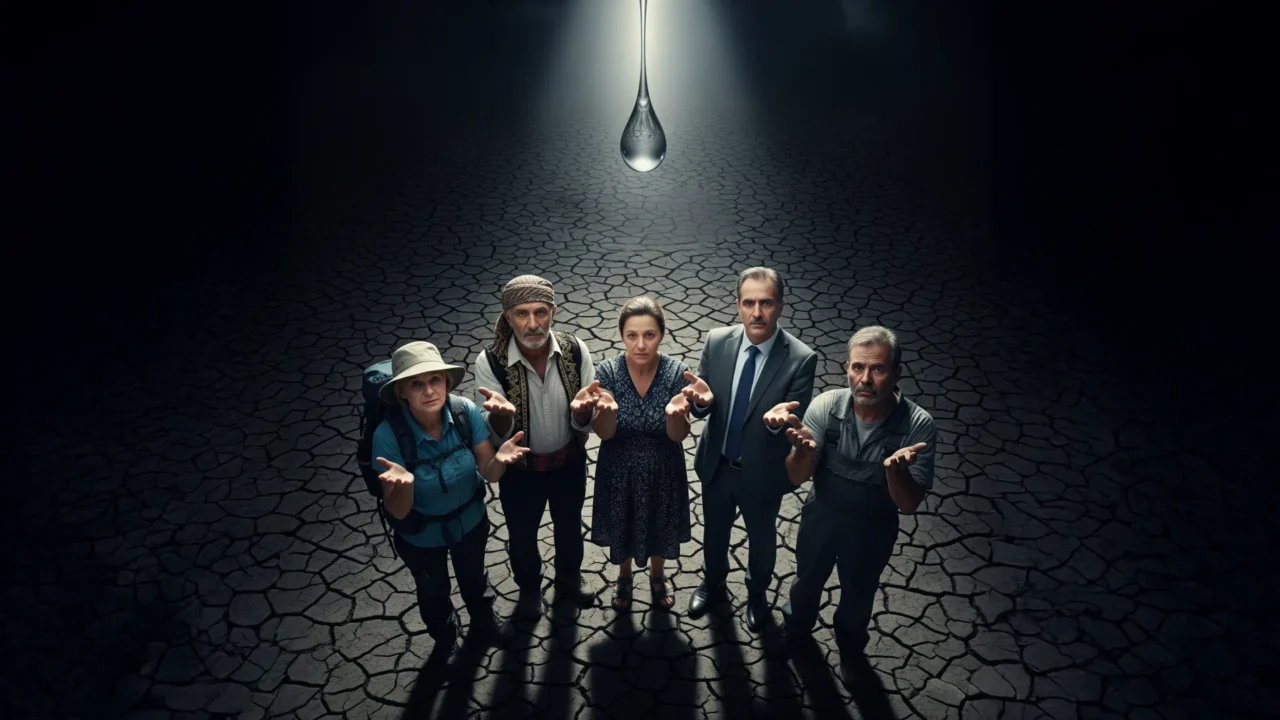
Mapping the European Drought Landscape
The challenge of water scarcity in Crete is not an isolated phenomenon but a regional manifestation of a continental-scale environmental crisis. Drought in Europe has transitioned from a cyclical, regional concern to a systemic, persistent threat, particularly for the Mediterranean basin. This slow-moving, high-impact phenomenon fits the definition of a “creeping crisis” – a situation that unfolds gradually but eventually escalates into a significant emergency, often catching governance structures unprepared despite ample warning signs.
The European Drought Observatory (EDO), a service of the European Commission’s Copernicus Emergency Management Service, provides a comprehensive suite of tools to monitor and analyze this escalating crisis. Using a range of indicators derived from satellite data, meteorological models, and in-situ measurements, the EDO offers a near-real-time assessment of drought conditions across the continent. Key indicators include:
- Standardized Precipitation Index (SPI): Measures precipitation anomalies over various timescales, indicating meteorological drought.
- Soil Moisture Anomaly (SMA): Shows deviations in soil moisture content, a critical factor for agriculture and ecosystem health.
- Combined Drought Indicator (CDI): An integrated metric that combines the SPI, SMA, and vegetation stress (fAPAR Anomaly) to provide a holistic assessment of agricultural and ecological drought, categorized into “Watch,” “Warning,” and “Alert” levels.
Analysis of EDO maps and reports from 2023 through mid-2025 reveals a persistent and expanding drought footprint across Europe. By May 2025, over 40% of the continent was experiencing some form of drought, with severe conditions concentrated in the Mediterranean. Reports from early 2024 highlighted long-lasting, above-average temperatures and poor precipitation leading to severe drought in southern Italy, southern Spain, Malta, and across North Africa. This pattern underscores the Mediterranean’s vulnerability, a reality projected by climate models which forecast the basin to experience a severe reduction in precipitation in the coming decades.
This long-term, predictable trend, coupled with a general lack of forceful, preventative strategies, firmly establishes the European drought as a “grey-rhino” crisis. This term describes a highly probable, high-impact threat that is often neglected or underestimated despite its obvious existence. The crisis is therefore not merely a consequence of meteorological events but also a reflection of a systemic failure in governance to proactively address a known and escalating risk. The lack of drought awareness among the public and policymakers, even in historically water-rich areas, has made it difficult for water managers to implement the necessary resilience strategies, leading to a reliance on reactive, crisis-management approaches rather than proactive, long-term planning.
A Focus on Greece
Within the vulnerable Mediterranean region, Greece stands out as a nation on the frontline of the drought crisis. The country consistently appears in EDO reports as an area of significant concern. In October 2023, meteo.gr reported that 38% of Greek territory was experiencing mild or medium drought, with conditions in Thrace classified as extreme. This situation persisted and intensified into 2024 and 2025. EDO data from July 2024 declared “warning drought conditions” for most of Greece, escalating to “alert drought conditions” in certain parts of the country. By early 2025, EDO reports confirmed that southern Greece was under persistent alert conditions, with tangible impacts on vegetation.
This escalating crisis is a direct consequence of compounding climatic factors. The country has been subjected to record-breaking heatwaves, with the summer of 2023 being the hottest in the Northern Hemisphere in two millennia. These high temperatures, combined with below-average rainfall and snowfall through the preceding winter and spring, have created a tinderbox situation, fueling devastating wildfires and placing immense strain on the nation’s water reservoirs. The Mornos reservoir, a key water source for the Athens-Piraeus metropolitan area, saw its water level drop 15-20% below the 14-year average in summer 2024.
Scientific studies corroborate these observations and project a grim future. Research indicates that Greece is expected to face more severe and prolonged drought events, with an anticipated increase in drought duration of up to four months per five years, particularly in the central and eastern parts of the country. These projections highlight the urgent need for robust adaptation strategies, as the country’s critical economic sectors, agriculture and tourism, are both highly dependent on water availability and highly vulnerable to scarcity.
The Case of Crete: An Island Under Acute Water Stress
The island of Crete represents a microcosm of the national crisis, but with amplified intensity due to its insular geography and extreme dependence on tourism. Local officials describe an “ever-worsening problem of water sufficiency,” a statement strongly supported by empirical data. Over the past decade, the island has experienced a sharp decline in rainfall and a concurrent increase in extreme drought events. In 2023, rainfall plummeted to a mere 40% of normal levels, a trend that continued into early 2024.
The European Drought Observatory has consistently flagged Crete as an area of particular concern. By early March 2025, EDO’s Combined Drought Indicator showed parts of Crete, along with central Greece, under “persistent alert drought conditions, with impacts on the vegetation”. This is not a future projection but a present and tangible reality. In recognition of this acute vulnerability, the Greek government has officially designated Crete as a “water-stressed zone,” a legal status intended to accelerate the implementation of emergency and long-term water management projects.
The island’s water balance is inherently fragile. As a semi-arid region, it relies entirely on its own limited water resources, primarily seasonal rainfall that replenishes its aquifers and reservoirs. However, a significant portion of this precipitation is lost to high rates of evapotranspiration, which are exacerbated by rising temperatures. The remaining water is subject to intense competition. Agriculture is the largest consumer, accounting for approximately 78-85% of total water use, followed by domestic and tourism consumption. This has led to the systemic over-exploitation of groundwater aquifers, a practice that is unsustainable and carries the long-term risk of saltwater intrusion, which can permanently contaminate freshwater sources. The combination of decreasing natural supply and intense, competing demands places Crete in a state of chronic water stress, a precarious situation that forms the critical backdrop for the analysis of its tourism industry.
Crete’s Post-Pandemic Tourism Boom
The Resurgence: Surpassing Pre-Pandemic Benchmarks
The recovery of Crete’s tourism sector following the COVID-19 pandemic has been nothing short of remarkable. It has not only rebounded but has surged past pre-pandemic levels, establishing new records for arrivals and economic activity. This powerful resurgence underscores the island’s strong brand and enduring appeal as a premier global destination, yet it also forms the primary driver of the escalating pressure on its natural resources.
The recovery trajectory was swift and decisive. While Greece as a whole was still 9.66% below its 2019 arrival figures in 2022, Crete had already exceeded its pre-pandemic benchmark by 4.98%. This outperformance was significant; in 2021, while Greece recovered about 60% of its 2019 tourism, Crete clawed back 75%. By 2022, with most restrictions lifted, Crete surpassed its 2019 revenue figure by 5.5%, setting a new record.
This robust growth continued and accelerated. In 2024, the island’s tourism sector recorded a 7% expansion over 2023. The two main airports, Heraklion and Chania, collectively handled over 5.35 million arrivals, a dramatic increase from the approximately 300,000 recorded in 2023. The momentum carried into 2025, with the first five months seeing Crete lead all Greek regions in tourism growth. The island welcomed over 1 million international air arrivals between January and May 2025, a 5.6% increase compared to the same period in 2024. This sustained, high-velocity growth demonstrates a powerful economic engine, but one that operates with an ever-increasing demand for the island’s finite resources.
Structural Shift I: The Proliferation of the Short-Term Rental Market
Crucially, the post-pandemic tourism boom is not merely a quantitative increase in visitors; it represents a qualitative, structural shift in the nature of the island’s accommodation sector. A primary driver of this transformation has been the explosive growth of the short-term rental (STR) market, facilitated by online platforms such as Airbnb and Vrbo. This expansion has fundamentally altered the tourism landscape, making it more fragmented, less regulated, and more resource-intensive.
The scale of this shift is stark. In 2024, the number of rental days in Greece’s STR market doubled compared to 2019, soaring to over seven million. Crete was one of the top three contributing regions, accounting for 12.1% of all rental days nationwide and registering a 9.3% year-on-year growth from 2023. The supply of properties has expanded in tandem. By December 2024, approximately 132,500 properties were listed on rental platforms across Greece, an 11% increase from 2023. This growth translated into a 17% increase in revenue, reaching €874 million for the year. Data for early 2025 shows this trend continuing, with short-term rental bed capacity in Greece exceeding one million in April, two months earlier than in 2024.
This rapid and often unregulated expansion of STRs is a key symptom and driver of overtourism. It adds significant accommodation capacity and visitor density, often concentrating tourists in residential areas not originally designed for such intense use. This phenomenon, sometimes termed “touristification,” can lead to the displacement of local residents, strain on local infrastructure, and a change in the character of neighborhoods. Furthermore, these platforms operate in a grey area of governance, often “largely outside the control of destinations and policymakers”. This makes it exceedingly difficult to monitor and regulate their environmental impact, particularly concerning water and energy consumption, and to integrate them into a coherent, sustainable tourism strategy.
Structural Shift II: Concentration and Overtourism Pressures
The post-pandemic growth in tourism is not evenly distributed across the calendar year or the island’s geography; instead, it remains highly concentrated, exacerbating pre-existing pressures and pushing the island toward a tipping point of overtourism. The tourism season in Crete is sharply defined, with the vast majority of arrivals and overnight stays occurring between June and October. This intense seasonality means that the island’s infrastructure—from roads and airports to water and waste management systems—must cope with a population that can effectively triple for a few months of the year.
This concentration in time and space is a hallmark of overtourism, a condition defined as the point at which the impact of tourism exceeds the physical, ecological, social, and political capacity thresholds of a destination. Research has identified Crete as one of the ten most overcrowded EU tourism regions at the NUTS-2 level, a designation that predates the most recent post-pandemic surge. The current boom, characterized by record arrivals and the proliferation of STRs, has intensified these pressures significantly. The result is increased congestion, a greater burden on public services, and a rising potential for social friction as the needs of a temporary, high-consumption tourist population compete with those of the permanent residents for limited resources, most critically, water. The prosperous tourism industry in Crete has, in effect, surpassed the island’s carrying capacity, threatening its fragile ecosystems and the long-term sustainability of the very industry that supports its economy.
The Unsustainable Nexus: Tourism’s Water Footprint on a Parched Island
Quantifying the Thirst: Tourism’s Direct and Indirect Water Consumption
The tourism sector in Crete is a voracious consumer of water, imposing a demand that is disproportionate to its temporary population and fundamentally at odds with the island’s semi-arid climate. The water footprint of tourism is both direct, through consumption in accommodations and recreational facilities, and indirect, through the resources required to support the entire tourism value chain.
Direct water use is significant. Studies estimate that in Crete’s hotels, direct consumption amounts to 2.71 cubic meters (m3) per tourist arrival. This figure, however, only represents a fraction of the total. Tourists, particularly those in luxury accommodations, consume substantially more water than local residents. This disparity is amplified by the proliferation of water-intensive amenities that have become synonymous with the island’s tourism product. The post-pandemic boom in short-term rentals has fueled a construction surge of villas and hotels boasting multiple private swimming pools, often unregulated and exceeding permitted limits. These pools, along with the irrigation required for lush, non-native landscaping and the operation of facilities like golf courses—which can require up to 2.3 million liters of water daily for an 18-hole course—represent a massive and growing demand on the island’s finite water supply.
The indirect water footprint of tourism is even larger. This includes the water embedded in the food consumed by tourists, much of which may be imported; the water required for energy production to power hotels and resorts; and the water used in the construction and maintenance of tourism infrastructure. When all these factors are considered, the total water demand generated by the tourism industry becomes a dominant force in the island’s overall water budget, creating a structural dependency that is increasingly precarious in the face of escalating drought.
A Collision of Timelines: Peak Tourism vs. Peak Scarcity
The fundamental unsustainability of Crete’s water-tourism nexus is starkly illustrated by a critical temporal mismatch: the period of peak tourism demand coincides precisely with the period of peak water scarcity. The tourism season is heavily concentrated in the summer months, from June to October, when millions of visitors flock to the island. This is the same period when Crete experiences its highest temperatures, lowest rainfall, and highest rates of evapotranspiration, leading to the nadir of its natural water availability.
This collision of timelines creates an acute, annual crisis for the island’s water management authorities. As demand from the tourism sector skyrockets, natural water replenishment ceases. To bridge this gap, municipalities and water utilities are forced to rely on the finite reserves stored in reservoirs and, most critically, to increase extraction from groundwater aquifers. This practice of over-extraction is, by definition, unsustainable. It leads to a progressive depletion of these vital underground reserves, resulting in an annual water deficit for the island estimated at 143 million cubic meters (hm3). This over-pumping also increases the risk of saltwater intrusion, a process where seawater seeps into coastal aquifers, contaminating them with salt and rendering them unusable for drinking or irrigation, a form of irreversible environmental damage. The tourism industry’s seasonal demand cycle is therefore not just drawing from the island’s annual water “income” but is systematically depleting its long-term water “capital.”
The concept of “carrying capacity” is central to understanding this dynamic. A destination’s carrying capacity refers to the threshold beyond which the impacts of tourism exceed its physical, ecological, and social limits. The evidence strongly indicates that Crete’s ecological carrying capacity for water has been breached. The soaring demand driven by an expanding tourism sector has collided with a shrinking and increasingly unreliable supply, a consequence of climate change. The resulting deficit is being serviced by the unsustainable depletion of a critical natural asset. This is not a strategy for resilient management but a managed decline, placing the entire socio-economic system on a precarious footing.
The Feedback Loop: How Drought Degrades the Tourism Product
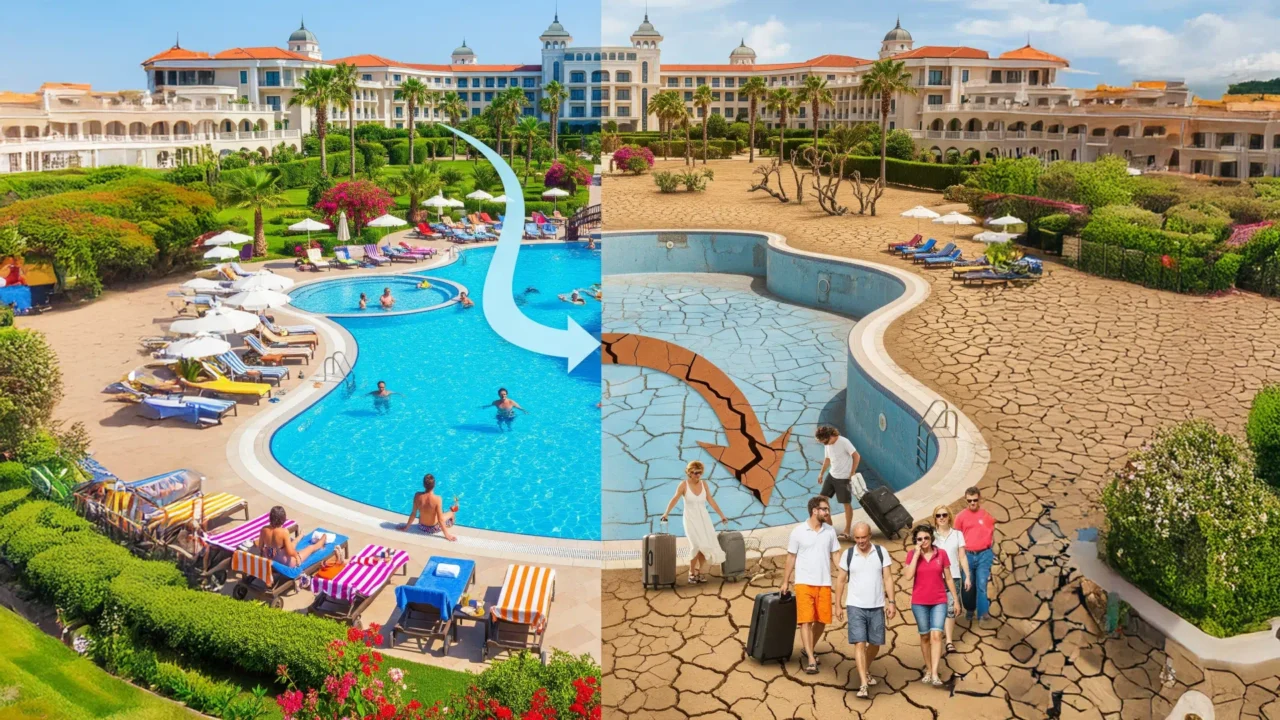
The relationship between drought and tourism is not unidirectional; it is a pernicious feedback loop where each exacerbates the other. While tourism’s high water demand intensifies drought conditions, the consequences of drought, in turn, threaten to degrade the very tourism product that drives Crete’s economy. This creates a long-term risk to the destination’s image, competitiveness, and ultimate viability.
Water shortages can directly impact the quality of the visitor experience. In response to severe droughts, authorities may be forced to impose water restrictions, which can affect tourist accommodations and services. This could include bans on filling swimming pools, requests for guests to take shorter showers, or even interruptions in water supply. Such measures, while necessary, can lead to visitor dissatisfaction and damage the island’s reputation as a premium holiday destination.
More broadly, prolonged drought degrades the natural and cultural assets that are the foundation of Crete’s appeal. Water scarcity impacts landscapes, turning lush green areas brown and diminishing the aesthetic quality that tourists seek. It threatens biodiversity and can lead to the degradation of sensitive ecosystems. Furthermore, the hot, dry conditions created by drought significantly increase the risk of catastrophic wildfires, as witnessed in Rhodes in 2023. A major wildfire event in Crete could destroy vast areas of natural beauty, damage tourism infrastructure, and create a powerful perception of the destination as unsafe, with long-lasting negative impacts on tourism demand. The potential for social conflict over scarce water resources, pitting the tourism industry against agricultural and residential needs, also poses a significant reputational risk. In this way, the unsustainable consumption of water by the tourism sector is actively undermining the long-term health of the natural environment upon which its own survival depends.
A Crisis of Governance: Evaluating Water Management and Resilience Strategies.
Applying Crisis Management Frameworks
The drought in Crete exemplifies a “creeping crisis,” a slow-burning issue that has been escalating for years, compounded by the “grey-rhino” nature of climate change—a large, obvious threat that is often inadequately addressed until it becomes an emergency. Effective management of such a crisis requires a proactive, planned approach focused on building long-term resilience. However, the response in Crete and Greece has often been reactive, treating drought as a series of acute events rather than a chronic, systemic condition.
The crisis management framework outlined by the European Travel Commission (ETC) and the European Commission provides a valuable lens through which to assess the current approach. This framework consists of four key phases: Preparedness, Response, Recovery, and Resilience. An analysis of Crete’s situation reveals significant weaknesses, particularly in the foundational “Preparedness” phase. There is a clear lack of strategic alignment between the national and regional policies promoting tourism growth and the policies governing water management. The two are treated as separate domains, rather than an interconnected system where the actions in one directly impact the other. This siloed approach prevents the development of a coherent, forward-looking strategy that anticipates and mitigates risks.
Consequently, the “Response” phase is often characterized by ad-hoc, emergency measures. When water levels in reservoirs become critically low, authorities resort to imposing water use restrictions, transporting water by ship to arid islands, and launching public awareness campaigns. While necessary in the short term, these are reactive tactics that manage the immediate symptoms of scarcity without addressing the underlying structural imbalance between supply and demand. They represent crisis management in its most literal sense, rather than a transition towards a more resilient, adaptive state. The lack of robust, pre-defined crisis management plans specifically for drought in the tourism sector means that responses are often improvised under pressure, hindering their effectiveness and coordination.
National and Regional Water Governance
The Greek government has formally acknowledged the severity of the water crisis. In July 2025, it unveiled a national water strategy, designating Crete and the Attica region as “water-stressed zones” to fast-track interventions. This national plan represents a significant, albeit belated, attempt to address the issue through structural reforms. Key pillars of the strategy include the consolidation of over 700 fragmented municipal water utilities into a few larger, more efficient public entities and the creation of a dedicated fund to finance major new infrastructure projects, such as dams and desalination plants.
These large-scale, supply-side projects are supported by significant international investment. The European Investment Bank, for example, has committed substantial funding for the construction of a new reservoir and irrigation network on Crete, aimed at improving water availability for the agricultural sector and replenishing over-exploited aquifers. Such projects are essential for enhancing the island’s long-term water storage capacity.
However, this top-down, infrastructure-focused approach faces several challenges. The ‘Governance for Drought Resilience’ report highlights that water governance systems are often characterized by “labyrinthine legislation” and “confusing competences,” which can create significant hurdles for the effective and timely implementation of large projects. There is also evidence of local resistance to the centralization of water management, with concerns that it could lead to the commodification of water and a loss of local control.
Most critically, the dominant focus on supply-side solutions fails to adequately address the demand side of the equation. The government is investing heavily in building a bigger bucket to catch what is becoming less and less rain, while simultaneously pursuing a tourism policy that invites an ever-increasing number of people to drink from it. This policy mismatch—attempting to solve a demand-driven problem with supply-side solutions—is a central flaw in the current governance approach. It risks creating a “rebound effect,” where any new water supply is quickly consumed by further, unmanaged growth in the tourism sector, thus failing to achieve a sustainable balance and build genuine, long-term resilience.
Local Initiatives and Tourism Sector Adaptation
At the local level, there are encouraging signs of initiative and adaptation, though these efforts remain fragmented and are often overwhelmed by the scale of the problem. Some municipalities have taken a proactive stance. The city of Rethymno, for instance, has been involved in the Interreg MED “CASTWATER” project to support sustainable tourism water management and has launched public awareness campaigns with water conservation leaflets targeting both residents and the high volume of summer visitors. In Heraklion, the “Zero Drop” program, a public-private partnership between the municipality, GWP-Med, and Coca-Cola, is working to upgrade agricultural irrigation infrastructure, installing new piping and remote-control systems to reduce leaks and save an estimated 14.5 million liters of water annually.
Within the tourism industry itself, a segment of operators is embracing sustainability. Several hotels and resorts in Crete are implementing water conservation measures, such as installing low-flow fixtures, using seawater for swimming pools, adopting “wash on demand” policies for linens, and educating guests about the need to conserve water. These initiatives demonstrate a growing awareness of environmental responsibility and are often linked to international eco-labels like the “Green Key” certification.
However, these positive, bottom-up efforts exist in stark contrast to the dominant, countervailing trends within the sector. The voluntary adoption of best practices by a few conscientious operators is overshadowed by the systemic pressures of mass tourism. The explosive, largely unregulated growth of the short-term rental market, particularly villas with private pools, continues to drive water consumption upwards. Without a comprehensive regulatory framework that mandates water efficiency standards for all tourism accommodations and controls the unchecked proliferation of high-consumption amenities, these laudable local initiatives will remain insufficient to alter the island’s unsustainable trajectory.
Is Crete’s Mass Tourism Model Sustainable?
Synthesizing the Conflict: Economy vs. Ecology
There is a deep and widening chasm between Crete’s economic trajectory and its ecological reality. On one side of this divide stands a remarkably robust tourism industry, which has demonstrated a powerful capacity for recovery and growth in the post-pandemic era. It is the undisputed engine of the island’s economy, generating significant revenue, attracting investment, and supporting a vast ecosystem of businesses and jobs. The surge in arrivals and the boom in the short-term rental market are testaments to the island’s immense and enduring appeal as a world-class destination.
On the other side of the chasm lies a fragile and deteriorating natural environment, under acute stress from climate change. The island is facing a chronic water deficit, driven by declining rainfall and rising temperatures, which has led to the unsustainable depletion of its vital groundwater reserves. This ecological crisis is not a distant threat but a present reality, confirmed by scientific data and acknowledged by governmental declarations of the island as a “water-stressed zone”.
The current model of mass tourism acts as a bridge across this chasm, but it is a bridge built on a foundation of ecological debt. The economic prosperity of the present is being financed by the depletion of the natural capital required for the future. The very industry that drives the economy is simultaneously the primary driver of the unsustainable demand for water, creating a direct conflict between short-term economic gain and long-term ecological viability.
The Overtourism Tipping Point
Crete is no longer just a popular destination; it is exhibiting the classic symptoms of overtourism, a condition where the negative impacts of tourism begin to eclipse its benefits, leading to a degradation of resources, the visitor experience, and the quality of life for residents. The island’s ranking as one of the most overcrowded EU tourism regions is a quantitative indicator of this pressure. The escalating water crisis is the most acute and dangerous manifestation of this phenomenon, representing a hard ecological limit that has been demonstrably breached.
The social symptoms are also becoming apparent. The “touristification” of residential areas, driven by the STR boom, strains public services and can lead to a loss of community identity. While widespread social unrest has not yet materialized, the underlying conditions for conflict are present. As water becomes scarcer, the competition between the tourism sector’s high-consumption model and the essential needs of agriculture and local residents is likely to intensify, creating a fertile ground for social friction and damaging the island’s reputation for hospitality. The tourism model is thus approaching a tipping point, where the cumulative environmental and social pressures threaten to undermine the very attractiveness that fuels the industry.
The Final Assessment
Based on the comprehensive analysis of environmental data, tourism trends, and governance frameworks, the conclusion of this report is unequivocal: Crete’s current model of mass tourism, in its post-COVID-19 form, is not sustainable. It is characterized by a brittle, rather than a genuine, resilience. The sector’s rapid bounce-back from the pandemic demonstrated its resilience to an external, demand-side shock. However, this recovery was achieved by intensifying pressure on the island’s water resources, thereby increasing its vulnerability to an internal, supply-side crisis—the drought. This is the illusion of resilience: a short-term economic boom built upon a foundation of increasing ecological fragility.
True resilience is the ability of a system to anticipate, adapt, and prosper in the face of disruptions. The current model in Crete demonstrates the opposite. It is failing to adapt its consumption patterns to align with the island’s environmental means. Instead, its unchecked growth is accelerating the depletion of a critical resource, making the entire socio-economic system highly vulnerable to the next inevitable dry year, heatwave, or infrastructure failure. Without a fundamental and immediate strategic shift away from a purely volume-driven growth paradigm, the model is on a trajectory that risks both ecological collapse, in the form of severe and widespread water shortages, and long-term economic decline, resulting from the erosion of its natural assets and reputational capital.
Strengths | Weaknesses |
• Strong Global Brand: High international demand and reputation as a premier destination. | • Extreme Water Dependency: Tourism’s high consumption is misaligned with the semi-arid climate. |
• Diverse Natural & Cultural Assets: Rich portfolio of beaches, historical sites, and landscapes that can support diversification. | • High Seasonality: Concentration of tourism in the driest summer months creates acute resource stress. |
• Robust Post-COVID Recovery: Demonstrated ability to attract visitors and generate significant revenue. | • Fragmented Governance: Lack of integration between tourism promotion and water resource management policies. |
• Growing Accommodation Capacity: Rapid expansion of STRs meets diverse consumer preferences. | • Aging & Inefficient Infrastructure: Significant water losses from outdated distribution networks. |
Opportunities | Threats |
• Shift to Sustainable Tourism: Growing consumer preference for eco-friendly and authentic experiences. | • Climate Change: Worsening drought, reduced rainfall, and increased frequency of extreme weather events. |
• Extend Seasonality: Develop and market attractions for spring/autumn to distribute visitor flows and reduce peak summer pressure. | • Reputational Damage: Overtourism, environmental degradation, and potential social conflicts can harm the island’s image. |
• Implement Water-Saving Technology: Mandate and incentivize adoption of efficiency measures in all accommodations. | • Regulatory Restrictions: Potential for government-imposed moratoriums on construction or severe water use restrictions that impact tourism operations. |
• Diversify Product Offering: Promote less water-intensive forms of tourism (e.g., agritourism, cultural tours, hiking). | • Social Backlash: Growing resentment from local communities over resource competition and impacts on quality of life. |
Sources and related content
- European Commission. (2024). Crisis Management and Governance in Tourism. Publications Office of the European Union.
- European Investment Bank. (2024). Crete fights droughts with new irrigation project. European Investment Bank.
- GTP Headlines. (2025). INSETE: Crete, Dodecanese Lead Greece’s Tourism Growth in First Five Months of 2025.
- Jaynes, C. (2025). 53% of Europe and Mediterranean Basin Impacted by Drought in Mid-May: Report. EcoWatch.
- National Bank of Greece. (2025). Business Trends: Greek Tourism Report. As reported by TornosNews.gr.
- Seabrook, V. (2025). More than 40% of Europe slides into drought, including pockets of Greece, southern Italy and Spain. Sky News.
- Vourdoubas, J. (2025). The degrowth of tourism industry in the island of Crete, Greece. Is it desirable and feasible? International Journal of Current Science Research and Review, 8(2), 749-758.
- Peeters, P., Gössling, S., Klijs, J., Milano, C., Novelli, M., et al. (2018). Research for TRAN Committee – Overtourism: impact and possible policy responses. European Parliament, Policy Department for Structural and Cohesion Policies.
- Politi, N., Vlachogiannis, D., Sfetsos, A., Nastos, P.T., & Dalezios, N.R. (2022). High Resolution Future Projections of Drought Characteristics in Greece Based on SPI and SPEI Indices. Atmosphere, 13(9), 1468.
- Tzanakakis, V.A., Angelakis, A.N., Paranychianakis, N.V., Dialynas, Y.G., & Tchobanoglous, G. (2020). Challenges and Opportunities for Sustainable Management of Water Resources in the Island of Crete, Greece. Water, 12(6), 1538.
- Vourdoubas, J. (2023). The Impacts of Covid-19 Pandemic on Tourism Industry in The Island of Crete, Greece. European Journal of Humanities and Social Sciences, 3(3), 72–80.
- Vourdoubas, J. (2024). The Water-energy-tourism Nexus in the Island of Crete, Greece. International Journal of Advanced Multidisciplinary Research and Studies, 4(3), 974-981.
- WWF (De Stefano, L.). (2004). Freshwater and Tourism in the Mediterranean. WWF.

